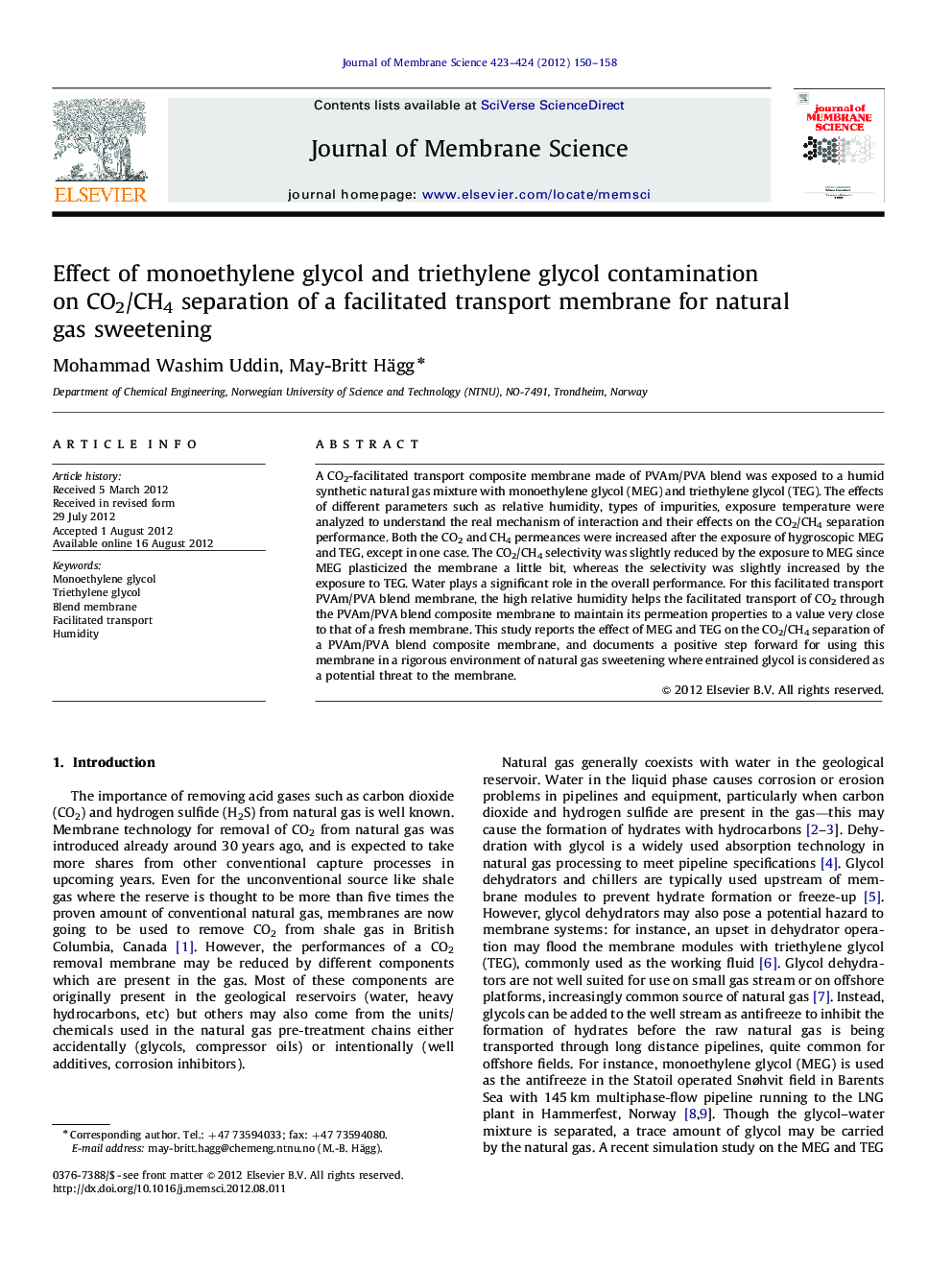| Article ID | Journal | Published Year | Pages | File Type |
|---|---|---|---|---|
| 634803 | Journal of Membrane Science | 2012 | 9 Pages |
A CO2-facilitated transport composite membrane made of PVAm/PVA blend was exposed to a humid synthetic natural gas mixture with monoethylene glycol (MEG) and triethylene glycol (TEG). The effects of different parameters such as relative humidity, types of impurities, exposure temperature were analyzed to understand the real mechanism of interaction and their effects on the CO2/CH4 separation performance. Both the CO2 and CH4 permeances were increased after the exposure of hygroscopic MEG and TEG, except in one case. The CO2/CH4 selectivity was slightly reduced by the exposure to MEG since MEG plasticized the membrane a little bit, whereas the selectivity was slightly increased by the exposure to TEG. Water plays a significant role in the overall performance. For this facilitated transport PVAm/PVA blend membrane, the high relative humidity helps the facilitated transport of CO2 through the PVAm/PVA blend composite membrane to maintain its permeation properties to a value very close to that of a fresh membrane. This study reports the effect of MEG and TEG on the CO2/CH4 separation of a PVAm/PVA blend composite membrane, and documents a positive step forward for using this membrane in a rigorous environment of natural gas sweetening where entrained glycol is considered as a potential threat to the membrane.
► Membrane exposure to MEG and TEG. ► Effect on CO2–CH4 separation performance after exposure. ► Performance is not affected seriously by MEG and TEG. ► MEG reduces selectivity slightly, while TEG increases selectivity. ► At high relative humidity performance changes are relatively small.
